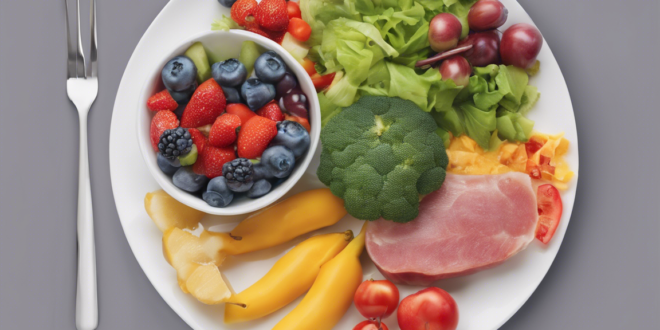Healthy Eating on a Budget: A Comprehensive Guide to Nutritious and Affordable Meals
In today’s economic landscape, maintaining a healthy diet while keeping your wallet happy can seem like a challenging task. However, with the right strategies and knowledge, it’s entirely possible to nourish your body without breaking the bank. This comprehensive guide will walk you through practical tips, smart shopping techniques, and budget-friendly meal planning that will transform the way you approach healthy eating.
Understanding the Importance of Nutrition
Before diving into budget-friendly strategies, it’s crucial to understand why healthy eating matters. Proper nutrition is the foundation of good health, impacting everything from your energy levels and immune system to long-term disease prevention. By making smart food choices, you can improve your overall well-being without spending a fortune.
Smart Shopping Strategies
1. Plan Your Meals
Meal planning is the cornerstone of budget-friendly healthy eating. By creating a weekly meal plan, you can:
– Reduce food waste
– Minimize impulse purchases
– Ensure balanced nutrition
– Save money by buying only what you need
2. Shop Smart
– Use grocery store loyalty programs
– Compare prices between stores
– Buy generic or store-brand products
– Check weekly ads and use digital coupons
– Avoid shopping when hungry to prevent impulse buying
Budget-Friendly Nutritional Powerhouses
Some of the most nutritious foods are also the most affordable. Consider incorporating these budget-friendly options into your diet:
1. Legumes
– Beans
– Lentils
– Chickpeas
These protein-packed foods are incredibly cheap, versatile, and nutritionally dense. A single pound of dried beans can provide multiple meals at a fraction of the cost of meat.
2. Frozen Vegetables and Fruits
Contrary to popular belief, frozen produce is often more nutritious than fresh options. They are:
– Picked at peak ripeness
– Frozen immediately to preserve nutrients
– Significantly cheaper than fresh produce
– Available year-round
– Easy to store and use
3. Whole Grains
– Brown rice
– Oatmeal
– Whole wheat pasta
– Quinoa
These grains are affordable, filling, and provide essential nutrients and fiber that support overall health.
Meal Prep and Cooking Techniques
Meal prepping is a game-changer for healthy eating on a budget. By dedicating a few hours each week to preparing meals:
– You’ll reduce reliance on expensive takeout
– Ensure consistent, nutritious meals
– Save time during busy weekdays
– Control portion sizes and ingredients
Budget-Friendly Cooking Tips
1. Use a Slow Cooker
Slow cookers are excellent for creating nutritious, budget-friendly meals. They:
– Tenderize cheaper cuts of meat
– Require minimal energy
– Allow batch cooking
– Preserve nutrients during cooking
2. Buy in Bulk
Purchasing non-perishable and freezer-friendly items in bulk can significantly reduce your grocery expenses. Focus on:
– Grains
– Legumes
– Frozen vegetables
– Meat (when on sale)
Nutritional Supplements on a Budget
While whole foods should be your primary source of nutrition, some affordable supplements can support your health:
– Multivitamins
– Vitamin D
– Omega-3 supplements
– Protein powders
Look for generic brands and buy during sales to minimize costs.
Avoiding Common Pitfalls
1. Processed Foods
Avoid pre-packaged, processed meals. They are:
– Expensive
– Low in nutritional value
– High in sodium and preservatives
2. Eating Out
Limit restaurant and takeout meals. Instead, invest time in home cooking.
Practical Meal Ideas
1. Breakfast Options
– Overnight oats
– Egg and vegetable frittata
– Smoothies with frozen fruits
– Greek yogurt with nuts
2. Lunch Suggestions
– Bean and rice bowls
– Lentil soups
– Vegetable-packed salads
– Whole grain sandwiches
3. Dinner Recipes
– One-pot chicken and vegetable dishes
– Stir-fries
– Bean chili
– Vegetable pasta bakes
Technology and Resources
Leverage technology to support your healthy eating journey:
– Meal planning apps
– Grocery store comparison websites
– Nutrition tracking applications
– Coupon and cashback apps
Conclusion
Healthy eating on a budget is not about deprivation but smart choices. By implementing these strategies, you can nourish your body, support your health, and maintain financial wellness. Remember, small, consistent changes lead to significant long-term results.
Final Tips
– Be patient with yourself
– Experiment with recipes
– Stay flexible
– Continuously educate yourself about nutrition
– Enjoy the process of discovering delicious, affordable meals
 Good Calories Guide GoodCalories Guide focuses on nutrition, healthy eating, and overall wellness. The site offers practical insights into evidence-based dietary practices, including tips for specific lifestyles such as veganism, keto, and family-friendly meal planning. It also addresses unique nutritional needs for individuals with conditions like diabetes or food allergies, while providing quick and accessible recipes to make healthy living a sustainable and enjoyable choice.
Good Calories Guide GoodCalories Guide focuses on nutrition, healthy eating, and overall wellness. The site offers practical insights into evidence-based dietary practices, including tips for specific lifestyles such as veganism, keto, and family-friendly meal planning. It also addresses unique nutritional needs for individuals with conditions like diabetes or food allergies, while providing quick and accessible recipes to make healthy living a sustainable and enjoyable choice.


